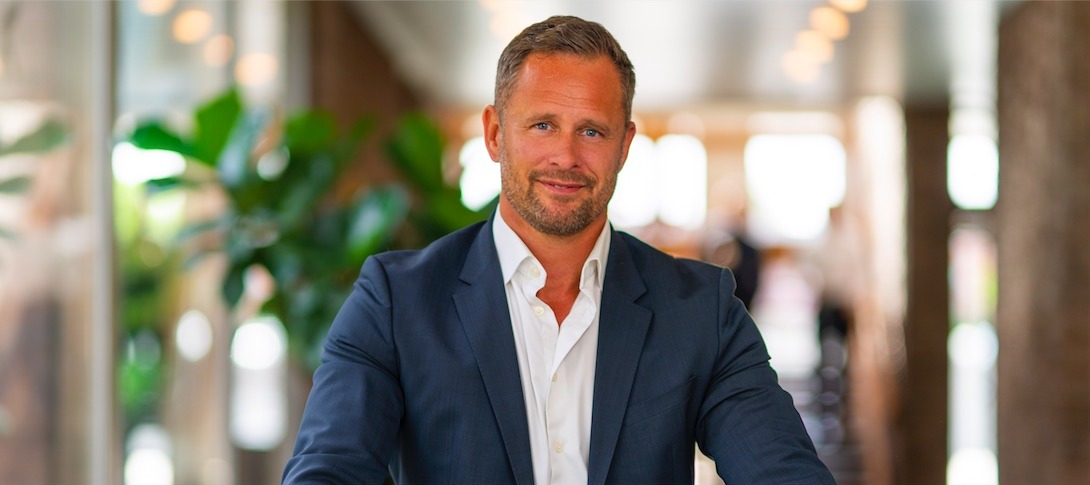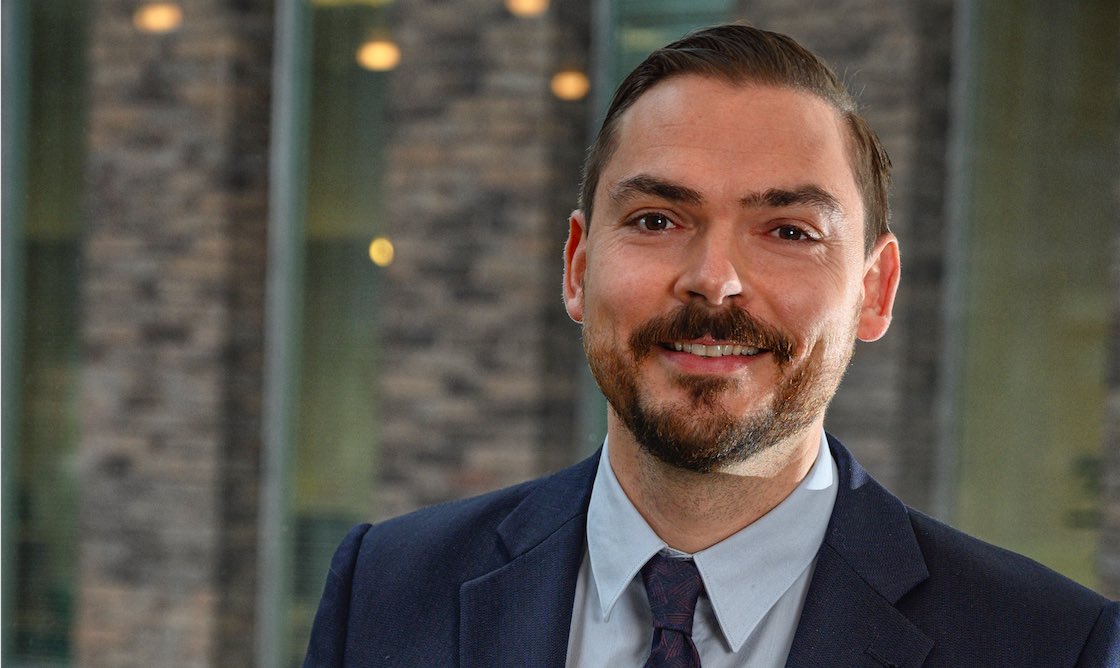By Hamlin Lovell, NordicInvestor
This article forms part of our upcoming report on alternative fixed income in the Nordics
Danske Bank Asset Management, Denmark’s largest asset manager with DKK 800bn AUM, of which DKK 400bn is in balanced mandates, has been building its platform in private credit to provide attractive risk adjusted returns.
“Alternative investments remain one of our key focus areas along with ESG and multi-asset solutions. We use private credit increasingly as a core component in our investment solutions to gain diversification and yield pick-up compared to classic credit components,” says Thomas Otbo, CIO (pictured above). “The attractions also include downside protection, and inflation protection from the floating rate component,” says Michael Bech, Head of Private Credit (pictured below).
Private credit remains a relatively small part of balanced mandates, which are dominated by liquid equities and credit including Danish mortgage bonds, but it is growing, and there are dedicated products.
Evergreen open ended structure
“The asset class appeals to a broad investor base including retail, high net worth, family offices and large institutions,” says Bech. Danske added to its closed end program with the re-launch of an evergreen structure in 2021 to broaden out appeal especially to retail, high net worth and family offices. These products have attracted significant inflows over the past year.
Private credit is the dominant asset class in the dedicated Evergreen fund of fund product – Danske Invest Defensive. As an open-ended fund structure it also needs to offer liquidity and manage liquidity with asset components such as syndicated loans, liquid low risk hedge funds, and some cash. “We try to get some return but take a conservative approach. Some of it is purely in cash or government bonds, and some is in very low risk hedge funds such as long/short investment grade. We have not used trade finance for short term cash management,” says Bech.

Asset allocation within private credit
The allocation is widely spread across sectors and sub-sectors. The broad exposure breakdown is 60-70% corporate, 10-20% asset -backed and 10-20% real assets, though this may also vary with market conditions.
Asset allocation includes non-investment grade credit through strategies that create exposure to such asset classes such as bank loans, direct lending, subordinated debt and special situations, as well as some infrastructure equity with core income features.
Dynamic strategy allocations and 2022 shifts
Bech is worried about recession and default risk, and so is emphasising more senior paper: “In mid-2022, we are in a very different environment than 6 months ago, and it is a time for caution. There has been a shift away from junior financing to more senior, secured first lien risk”.
The direct lending allocation is on hold for several reasons. “We already have a lot of exposure and want to diversify. We are not actually reducing but are adding to the mix”. On direct lending he is also alert to the risk of loosening terms as the market becomes commoditised.
Meanwhile other niches are being expanded: “we have been increasing allocations to opportunistic lending to take advantage of the market dynamics and managers’ ability to generate alpha through more bespoke situations, including corporate event financings, and are also looking to asset based financing and special situations/distressed, which can be senior secured first lien, to add diversification.” says Bech.
Return targets and yield pickups
The return target for the evergreen fund of funds, of 4-6% in Euros, after fees and currency hedging costs, allows for somewhat lower return on the liquid cash management portion and the private credit return target is somewhat higher. It could be 5.5-6.5% for direct lending and more for opportunistic strategies. In terms of yield pickup over liquid high yield credit, Bech expects to get 100-200 basis points pick-up from direct lending, and 300-400 from more opportunistic strategies. This should cover all categories of risk premiums, including illiquidity, complexity, sourcing and structuring.
As of June 2022, Bech had not noticed much repricing in private debt, but he expects that, “it will come from general spread widening and compression of supply from banks, especially in the senior space. It does however depend on how long the situation persists”. The illiquidity premium varies over time, but over long periods it should be a consistent source of returns regardless of other risk premiums widening or tightening.
In house due diligence and manager selection
Sourcing can come from a range of inbound and outbound routes: conferences, consultants, capital introduction teams, databases, agents, third party marketers, strategic partners. A strong network built up over decades investing in private markets helps to gain access to some of the largest and best performing managers such as KKR, CVC, Carlyle and ICG.
The Danske Bank Asset Management Alternative Investment platform has a dedicated investment team of 25 people across private debt, private equity and infrastructure, responsible for manager and strategy selection, due diligence, and ESG screening as well as cash and liquidity management. Due diligence typically takes 4-8 weeks, and pays strong attention to track records and ESG integration. Nearly everything is done in house. There are internal tax and legal teams, while external legal counsel, including Danish, UK and US law firms, are also used to help review documentation and structures. Tax due diligence also considers domicile and might involve some external advice.
“We often follow managers for years before allocating, and screen the market consistently, however only about 10-20% of them are new managers because we have been in the market a long time. We like to see long track records over more than one fund or strategy, including crisis periods,” says Bech.
Most funds invested in run at least $1 billion though it might be less for some opportunistic strategies. At manager level, assets across strategies and vintages are usually over $10 billion: “we find the bigger platforms generally outperform and have better research capabilities in liquid and illiquid credit,” notes Bech.
Danske would not want to be more than 10% of a strategy with a manager.
Vehicles
Fund domiciles are mainly Luxembourg or Ireland. “we are sensitive to the tax haven perception of offshore jurisdictions,” says Bech.
Danske is active in co-investments, especially in the Nordic region, and can co-invest quickly, which is appreciated by managers. “So far there has been more co-investment on the private equity side, but private credit is growing,” says Otbo.
Though Danske’s own fund of funds vehicle is an open ended structure, its underlying investee funds are nearly all closed end funds, with maturities ranging between three and seven years, including commitment and harvesting periods. “We have seen some open ended and hybrid structures but have not yet invested in them. We are wary of return drag from liquidity features, but keep it on the radar” points out Bech.
“We are aware of the secondary markets, which are growing. We have not yet used them but we are likely to,” adds Bech.
ESG
The evergreen fund of private credit funds make disclosures under SFDR article 8, and there is a gradual migration in the market towards article 8 compliance. “We can however still invest in some article 6 funds, so long as there are separate agreements on article 8 reporting requirements.” says Bech. Danske also manages strategies making disclosures under SFDR 9.
A significant part of the due diligence effort screens for ESG before investing, and is supported by a dedicated ESG team. “Managers need stated responsible investment policies and should have adequate organisational resources to support them; ESG factors are embedded in their investment processes and that they are able to disclose and report on certain matters. Rather than imposing hard requirements, it is more about policies and frameworks,” says Otbo
“Overall private funds have been slower to adopt ESG but the tendency is clear, and credit managers are generally migrating towards more ESG friendly strategies,” observes Bech.
Danske is a signatory of the Net Zero asset managers’ initiative, is committed to net zero by 2050 and an interim 50% target reduction by 2030, across all asset classes.
Some strategies have highlighted specific SDGs. The private credit side has not so far, but some of its investments are furthering SDGs, including US energy transition and battery production in Sweden.
Outlook
As of June 2022, Danske had not noted an increase in defaults, but are aware of risks from inflation and interest rates. “We expect private credit markets to continue to develop and grow and as long we can achieve diversification, reasonable terms and a yield pick-up compared to the liquid markets we will remain active in this asset class,” says Otbo.



